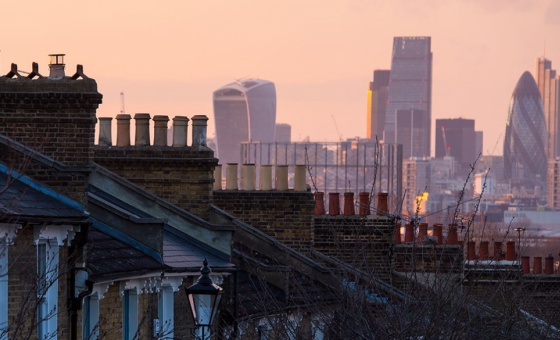This is the last article you can read this month
You can read more article this month
You can read more articles this month
Sorry your limit is up for this month
Reset on:
Please help support the Morning Star by subscribing here
RECENTLY unearthed in their original crumbling box in the archives of the Liverpool John Moores University library, the set of anti-nazi photomontage posters by John Heartfield, dating from the 1930s, are a rare and timely find.
Scathingly satirical artworks against war and fascism, they go on show from November 1 at Four Corners in London’s East End in a period when the threat of the far right in Britain, Europe and the US is greater than it has been for generations.
A pioneer of German agitprop and an early member of the Berlin Dada group, Heartfield was a commited communist who during the period of Hitler’s rise invented the techniques of photomontage to produce devastating poster work.
Armed with scissors, paste and acerbic wit, he used art as a political weapon and made vital visual contributions to the communist newspaper Die Rote Fahne (The Red Flag) and A-I-Z (Arbeiter-Illustrierte-Zeitung —Workers’ Pictorial Newspaper) which in 1930 had a circulation of 350,000.
He also created book jackets for writers such as Upton Sinclair and stage sets for playwrights Bertolt Brecht and Erwin Piscator.
Heartfield subverted nazi imagery to reveal the hypocrisy, greed and political threats of 1930s Germany, not least the collusion of big business with the nazis and, some 80 years later, his striking photomontages speak directly to an era of rising far-right politics, racism and the blurring of fact and fake news.
He risked his life as the nazis’ grip on power grew stronger and after he was named on Hitler’s death list he fled to Prague in 1933, where A-I-Z continued publication.
In 1938, just before the nazi invasion of Czechoslovakia, he escaped to Britain, changing his name from the German Helmut Hertzfeld.
Initially interned as an enemy alien, he was released on grounds of ill health and, living in north London, joined the newly established Free German League of Culture.
In 1950 Heartfield returned to East Germany, where he died in 1968.
In the late 1960s and 1970s, Hartfield’s work was rediscovered by a new generation of radical photographers, writers and artists associated with Camerawork magazine.
They repurposed Heartfield’s style of satirical photomontage for the struggles of their own time, a notable example being Peter Kennard’s Haywain with Cruise Missiles, a subversion of the famous John Constable painting, which had a huge impact.
And that influence continues. As John Hyatt, of Liverpool John Moores University and co-curator of the exhibition with Four Corners, says: “Unforgettable juxtapositions, visual collisions, biting wit and the subverted languages of advertising, propaganda and iconography create fissures in the construction of modernity through which Heartfield shines the light of truth to shrivel and shame the occult darkness of populism, fascism and lies.
“These posters are as vital today as they were when Heartfield’s glue was still wet.”
Heartfield: One Man’s War is in the programme of Insiders/Outsiders Festival, which celebrates the contribution of refugees from nazi Europe to British culture. It runs at Four Corners, 121 Roman Road, London E2, from November 1 to February 1, opening times: fourcornersfilm.co.uk.











